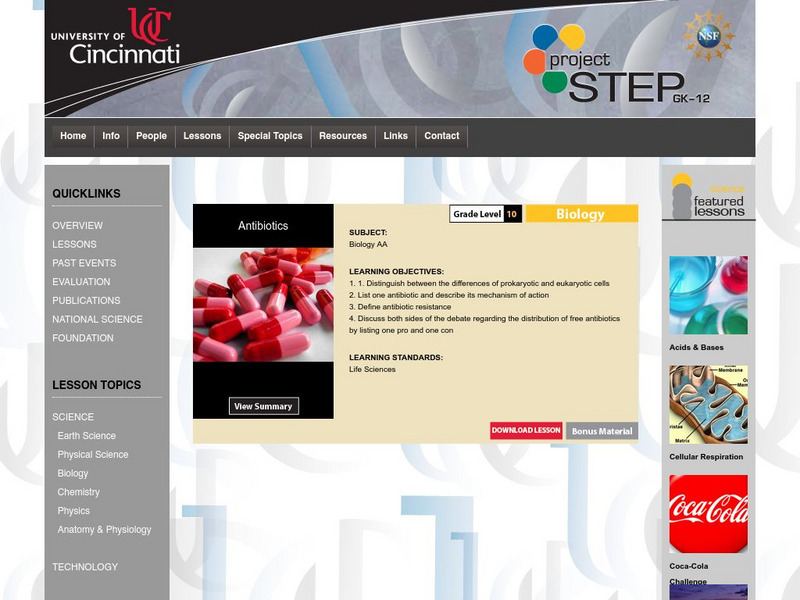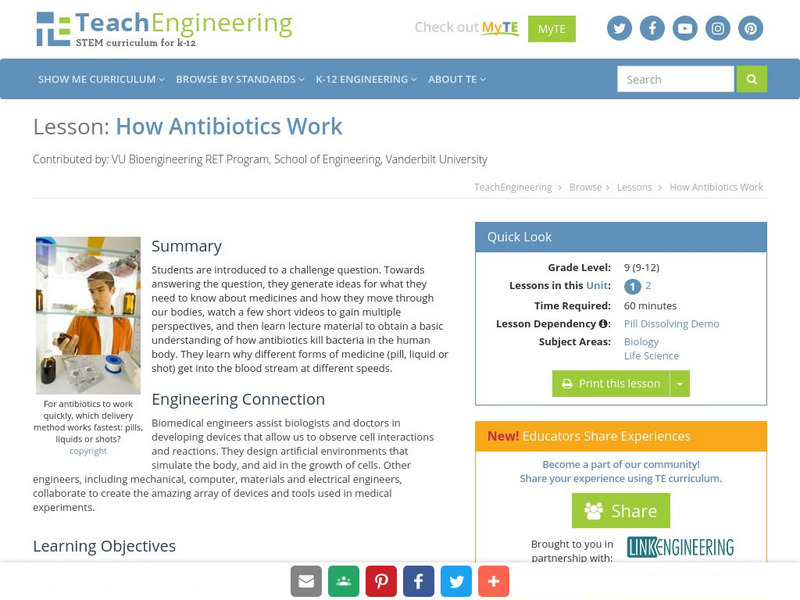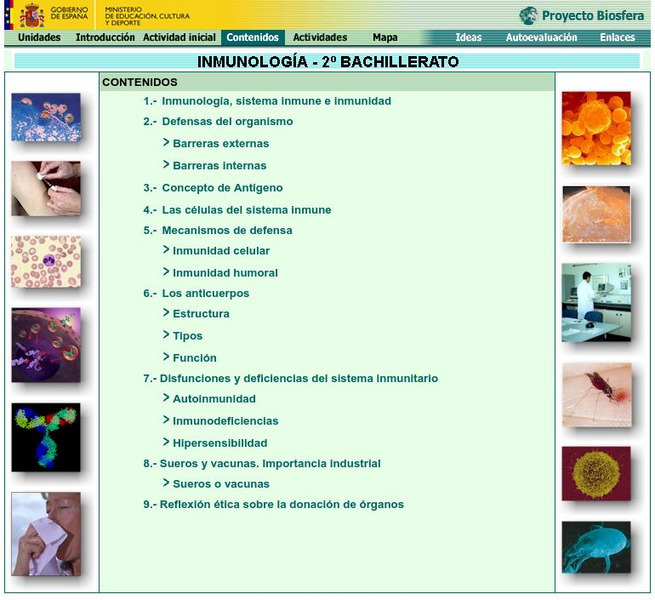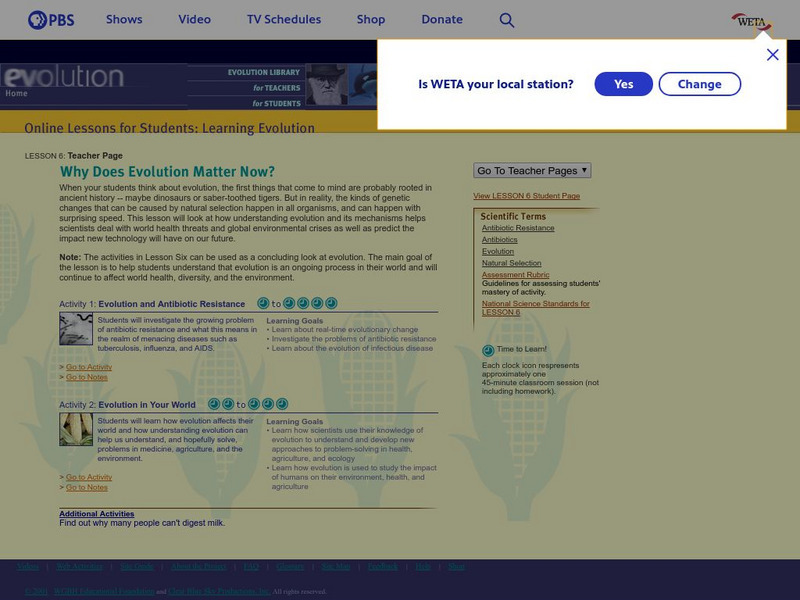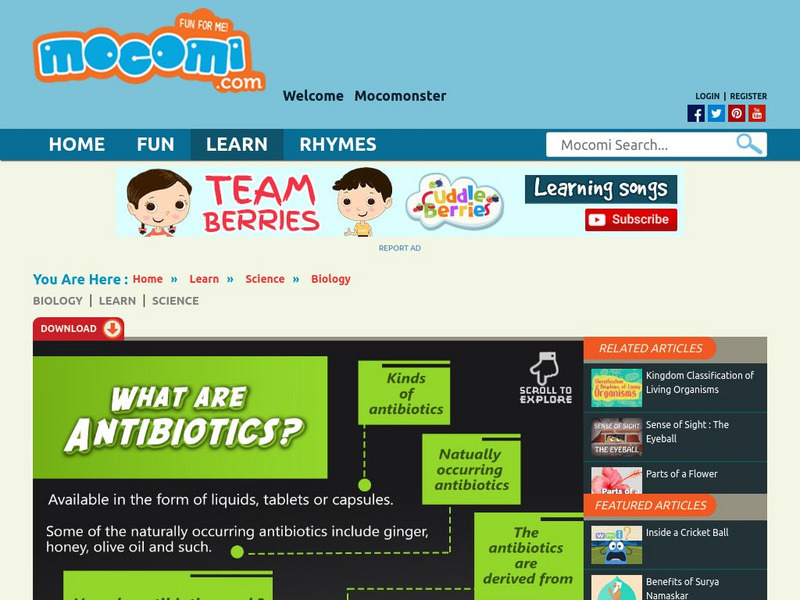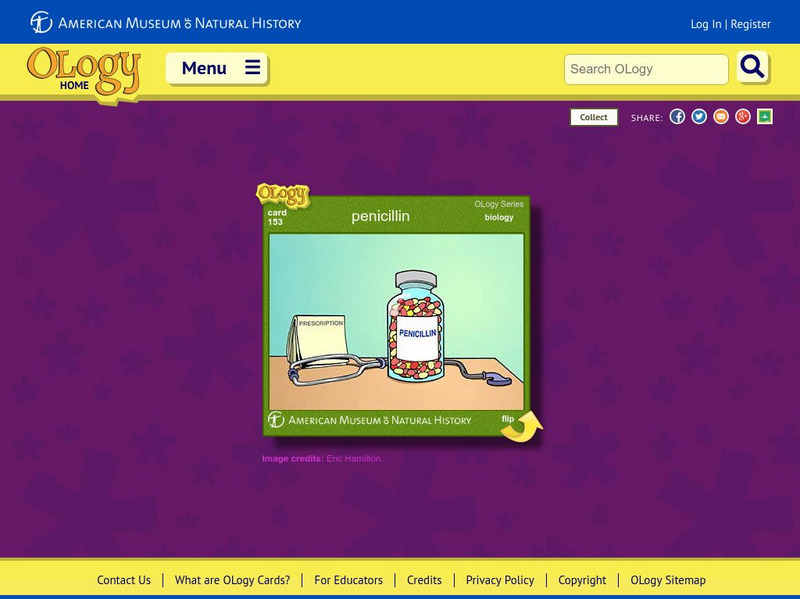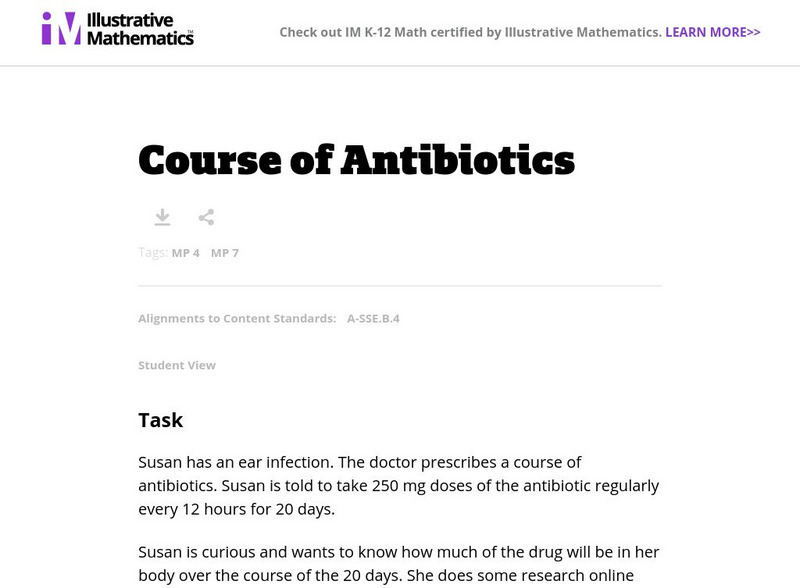Other
University of Cincinnati: Project Step: Antibiotics
STEM biology lesson where by designing their own antibiotics, students will gain an understanding of how the differences between prokaryotic cells and eukaryotic cells have played a role in their own health. They will also be able to...
TeachEngineering
Teach Engineering: How Antibiotics Work
Students are introduced to a challenge question. Towards answering the question, they generate ideas for what they need to know about medicines and how they move through our bodies, watch a few short videos to gain multiple perspectives,...
PBS
Nova: Forgotten Genius: Nature?s Pharmacy
The tutorial discusses species that have chemical compounds to fight human illnesses. Some topics include "penicillium" mold, cinchona tree, and "streptomyces" bacteria. The activity consists of a printable version and interactive version.
University of Arizona
Pulse: Disease & Epidemics: Architects of History
A 10 week interdisciplinary unit plan on disease and epidemics.
Science Museum of Minnesota
Thinking Fountain: Making Mold
Thinking Fountain, from the Science Museum of Minnesota, offers a project in word and picture. With everyday items, you can grow your own mold, both bread mold and penicillin!
Science Buddies
Science Buddies: Natural Antimicrobial Agents
This abstract asks you to discover what sources you can test for antimicrobial action by culturing bacteria in the presence of an extract from a source you hypothesize to have antimicrobial properties. Antimicrobial properties have been...
Science Education Resource Center at Carleton College
Serc: Activity 1: Evolution and Antibiotic Resistance
This page contains three student activities for learning about evolution of antibiotic resistance. The first activity involves two videos (freely available on the website), follow-up questions, and classroom discussion. The second...
National Institute of Educational Technologies and Teacher Training (Spain)
Ministerio De Educacion: Inmunologia 2 Bachillerato
How do we defend against disease? Why should get vaccinated? Find the answers to these questions and everything about the immune system in this session. It contains 16 interactive activities.
PBS
Pbs Teachers: Why Does Evolution Matter Now?
Discover how evolution affects your world and how understanding evolution can help solve problems in medicine, agriculture, and the environment. Investigate the growing problem of antibiotic resistance.
BioMan Biology
Bio Man Biology: Conflict: Immunity
Tutorial and game on vocabulary and functions of the immune system. Covers different cell types, immune responses, germs and pathogens, and antibiotics.
Other
Do Bugs Need Drugs?: Antibiotics Guide
This non-profit organization provides information for healthcare professionals, the public, teachers, parents, children, daycares and assisted living sites.
Mocomi & Anibrain Digital Technologies
Mocomi: What Are Antibiotics
This entry provides a brief but in depth explanation of antiobiotics and how they function within the human body.
CK-12 Foundation
Ck 12: Biology: Bacteria and Humans
[Free Registration/Login may be required to access all resource tools.] Discusses the benefits of and diseases caused by bacteria.
American Museum of Natural History
American Museum of Natural History: Penicillin O Logy Card
Turn over this interactive OLogy card and start learning bite-size pieces of useful information about penicillin.
Read Works
Read Works: Antibiotics: Use Them Wisely
[Free Registration/Login Required] This passage focuses on Antibiotics including who invented them, how they work, how germs can become resistant to them, and how to take them. It is followed by a comprehension question set.
BBC
Bbc: Gcse Bitesize: How Can We Treat Disease? Ocr 21 C
This lesson focuses on Antibiotics including what they are, how they work, and antibiotic resistance. It also briefly discusses pain killers and viral diseases; it also provides a link to a test.
BiologyWise
Biology Wise: Gram Negative Bacteria
Learn about gram staining and the characteristics of gram-negative bacteria. A discussion of cell wall structure is accompanied by a labeled illustration. Includes a list of examples of gram-negative bacteria organized by subgroup....
The Franklin Institute
Franklin Institute: Penicillian: Fungi Rule Ok
Learn about the discovery of the penicillium mold by Alexander Fleming, and then of the production of it for the soldiers of World War II. Included are resources for both teacher and student.
Illustrative Mathematics
Illustrative Mathematics: A sse.b.4: Course of Antibiotics
This task presents a real world application, prescribing a course of antibiotics. In this task, a finite geometric series is utilized. Aligns with A-SSE.B.4.
American Institute of Biological Sciences
Action Bioscience: Microbes: What They Do & How Antibiotics Change Them
Check out what can happen when antibiotics and antibacterial washes and wipes are over used in this article and supporting resources and activities.
Centers for Disease Control and Prevention
Centers for Disease Control: An Ounce of Prevention Keeps the Germs Away (Pdf) [Pdf]
This resource provides detailed information about preventing illness, and forming healthy habits.
CK-12 Foundation
Ck 12: Earth Science: Revolutions in Human Population Growth
[Free Registration/Login may be required to access all resource tools.] Describes causes of increased population growth.
Khan Academy
Khan Academy: What Is Antibiotic Resistance?
Antibiotic resistance describes a bacteria's ability to survive while being exposed to antibiotics. Topics explored are the following: How does antibiotic resistance develop exactly?; How do we measure antibiotic resistance?; How...


